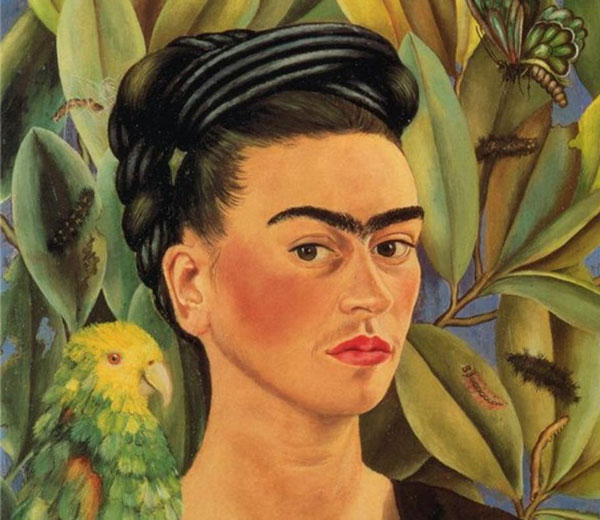
Niamh Thornton discusses how eyebrows have always been one of the most important parts of a woman’s body and the inspiration behind her research project Brews & Brows.
Mexican artist Frida Kahlo is the subject of a major exhibition at London’s V&A museum, which has been running since July and tells the story of her life through more than 200 artefacts and clothing. Among the items on display is the eyebrow pencil she used to accentuate the monobrow which – along with her instantly recognisable colourful costumes and the flowers with which she habitually dressed her hair – became her trademark, with which she stressed her indigenous heritage.
I am a specialist in Mexican studies, so Kahlo’s life and work are important to me. So too is the work of another famous Mexican woman of the period, María Félix. An unlikely friend of Kahlo’s, Félix was more conventionally glamorous, and was the biggest film star of Mexican cinema’s “golden age”. Her defined eyebrow arch and its predominance in her performances led me to consider the significance of the brow on screen.
As a Liverpool-based academic, my attention has also been drawn to the “Scousebrow” – a term bandied about on social media. It’s a product of the scripted reality show Desperate Scousewives (2011-12) and, shortlived as the series was, the term has lasted. A Scousebrow describes a brow that is arched, highly structured, tinted or drawn above the brow line, darker than the wearer’s natural hair colour and clearly artificial. This stylised look is not unique to the Scousebrow, but it has led to an unjustified level of abuse and mockery.
Ironically, just as the Scousebrow was being ridiculed by the press, model Cara Delevigne’s thick, groomed brows were being celebrated as natural by high-end fashion magazines. Just like Kahlo’s monobrow, Delevigne’s carefully cultivated brow is presented as “natural”, while the Scousebrow (like Félix’s) is erroneously read as “false”. So, when it comes to eyebrows, it seem that beauty is being defined by social class.
So, in April 2018 we launched the “Brews and Brows” project, a collaboration between the University of Liverpool, Liverpool John Moores University, Edge Hill University and Manchester Metropolitan University which aimed to develop a new way of looking – and talking about – eyebrows. As people came into our Brow Booth, or had 3D scans done of their brows, multiple stories emerged about how people feel about their brows.
There’s no doubt that brows are a big thing: last year the Financial Times estimated that the eyebrow “industry” in the UK was worth more than £20m – and, when Scottish comedian Gary Meikle recorded a vlog in September about his daughter’s obsession with her eyebrows and asked: “When did eyebrows become the most important part of a woman’s body?” it went viral. The vlog attracted more than 15m views (“three times the population of Scotland”, as one of his Twitter fans noted).
Meikle’s vlog is part of a wider conversation taking place around the brow that is gradually getting more attention beyond the beauty pages. It is also about a broader question about how women’s beauty is perceived and policed.
Discover more
- This is an excerpt from an article originally published on The Conversation. Read the full article.
- Find out more about the Brews & Brows project.